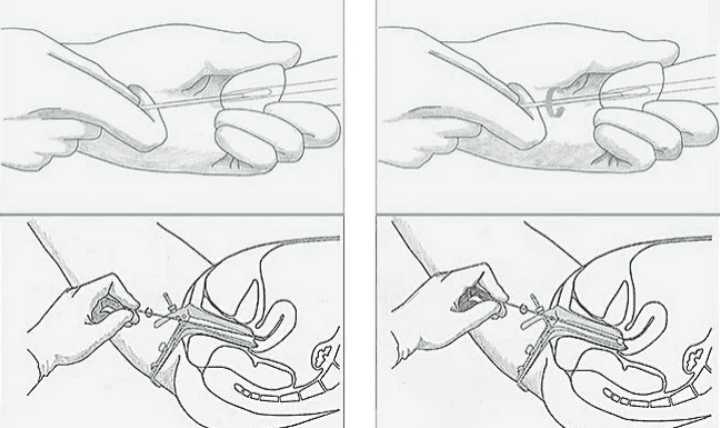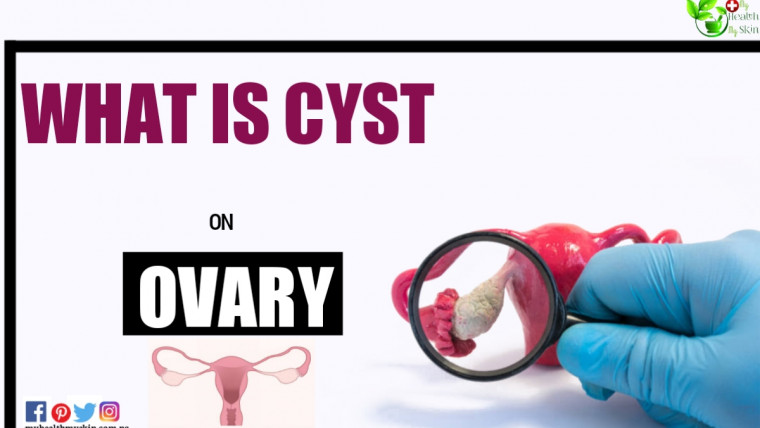Sexually transmitted infections do not always have a clear clinical picture. However, they cause untreated chronic inflammation, infertility and miscarriage in early pregnancy. Both men and women who have sex should be examined. This can be done without a doctor’s prescription.
Methods Of Diagnosis Of Sexually Transmitted Infections
Modern laboratories offer several methods of diagnosis of sexually transmitted infections, which are distinguished by high specificity and accuracy. They not only detect the perpetrator, but also assess its ability to form a colony. This indicator allows you to determine the carrier or active infection. This is necessary because, depending on the type of microorganism, treatment or observation may be required.
Which tests should be performed for sexually transmitted infections depends on the purpose of the test and the characteristics of each perpetrator. Diagnosis can be made by the following methods:
- smear from a woman’s uterus and urethra, a man’s urethra;
- bacterial culture to detect microbes;
- mycological analysis in the examination of fungal infections;
- virological examinations;
- immunoenzyme assay – IFA;
- chain polymerase reaction – PCR.
Bacterioscopic Examination – Smear
Microscopic examination of the genital smear is the simplest method of diagnosis, but does not allow to identify all the perpetrators. It is also less informative in latent infections. Only large microorganisms – bacteria, unicellulars, fungi, etc. – are present in the ointment. can be detected, but viruses and a number of intracellular pathogens cannot be seen.
Bacteriological Examination – Inoculation
Planting in a nutrient medium is used in the diagnosis of bacterial and fungal infections. The laboratory uses a selective environment for this purpose, which only allows the development of certain infections. The composition of the environment is different for fungi and microbes. This method of diagnosing sexually transmitted infections is also used to study the sensitivity of the causative agent to antibiotics. Cells, chicken eggs, or embryos from other organisms are used to obtain viral colonies.
Enzyme-linked Immunosorbent Assay (ELISA)
Enzyme-linked immunosorbent assay (ELISA) – This method can detect antigens and antibodies using a specially labeled enzyme. These analyzes can be both qualitative and quantitative: in the first case, the presence of microorganisms is determined, and in the second – its concentration. The material studied is blood plasma.
Chain Polymerase Reaction – PCR
Chain polymerase chain reaction (PCR) is based on the detection of DNA by microorganisms. It is enough to have a fragment of nucleic acid to get the result. Currently, a method of real-time detection of PCR has been developed, which allows to determine the number of perpetrators in a single volume of tested material. This diagnostic method is effective in the examination of all biological fluids listed below:
- urine;
- blood;
- cervical canal secretion;
- sperm;
- mouth water.
Express Tests – Diagnostic Tests
Express analysis for sexually transmitted infections has also been developed. It allows you to get results in 15 minutes. The analysis is based on immunochromatography. When the test is immersed in the biological fluid being tested, it absorbs it. The striped antibodies react with the substances in the liquid. If it is positive, a bright colored stripe appears on the test.
You May Also Like:
- Effective Treatment Package For Infertility In Men And Women With No Side Effects – 100% Organic
- Diabetes: What’s it? Causes, Symptoms, Treatment and Prevention
You can be tested for AIDS, candidiasis and syphilis at home. However, the accuracy of such analyzes may not be consistent with laboratory testing. Clinics also use rapid tests for syphilis, AIDS, and hepatitis, but they are different from those designed for the home.
Indications For Examination For Sexually Transmitted Infections

These tests should not be given by people who do not have sex. Even if the contact has been once, it is an examination. Once unprotected sex is enough to cause a sexually transmitted infection. It is recommended to be examined in the following cases:
1. Unprotected sexual intercourse – chlamydia, trichomoniasis occurs in 50-70% of men and 60-80% of women in a chronic asymptomatic form, often carriers. During sexual intercourse, the partner may not show any signs of infection, but it is secreted in the sperm. Examination is also needed during rape and when partners change frequently.
2. Pregnancy planning – to prevent complications of infectious diseases during pregnancy, it is still necessary to check in preparation for pregnancy. In the case of a positive result, antibacterial drugs are selected, the choice of which is much wider than during pregnancy.
3. Pregnancy termination by opening – analysis for latent infection is indicated for women who have had more than 2 pregnancies in the early stages of pregnancy. The main reason for the discovery is sexually transmitted infections that damage the embryo.
4. Infertility – Women who are unable to conceive often suffer from chronic endometritis. The changes damage the lining of the uterus, the infection reduces its receptive ability, and the embryo cannot implant.
5. Pregnancy – Patients who are not screened before fertilization should be tested for underlying infections. When a woman is registered, she is tested for AIDS, syphilis, gonorrhea, hepatitis B, C, and a swab is taken from the uterus. These diseases are potentially dangerous for the fetus, which, if left untreated, can cause serious complications.
6. Preoperative preparation – basic tests for blood-borne sexually transmitted infections are performed before all surgeries.
If you have chronic vaginitis, colpitis, adnexitis, which often recur and are poorly treated, it is recommended to test for sexually transmitted infections. Probably a secret infection.
In case of signs of acute inflammation, a swab is taken from the genital tract, and other tests are given as directed. After treatment, repeated tests are given to check the effectiveness of therapy.
What Is Included In The Basic Analysis
The list of tests for sexually transmitted infections depends on the purpose of the test and the specific laboratory. The main sexually transmitted infections that require testing include:
- qonoreya;
- xlamidioz;
- papillomavirus infection;
- SPİD;
- syphilis;
- trixomoniaz;
- mycoplasmosis;
- Ureaplasma.
The list expands as needed. Some laboratories offer a comprehensive examination. It is used when the cause of chronic inflammation, infertility and other pathologies is not clear. The extended examination covers the following microorganisms:
- B hepatitis;
- C hepatitis;
- qardnerella;
- candidate;
- herpes;
- gonococci;
- mycoplasma;
- trixomonada;
- cytomegalovirus;
- papillomavirus.
The examination is completed by analysis of a smear taken from the uterus, which determines the composition of the normal microflora, the amount of leukocytes.
Some laboratories offer ready-made complexes for sexually transmitted infections. It can be used when there is itching in the urogenital tract. Different classes of antibodies against hepatitis, AIDS, herpes and chlamydia are detected in blood tests. However, for people who change their sexual partners frequently and do not use barrier contraception, a universal general test that checks for all infections is more appropriate.
Preparation For The Examination
The results of the examination are influenced by lifestyle, nutrition and hygienic procedures. The use of antibiotics before the examination can lead to erroneous results.
Therefore, it is not recommended to take antibacterial drugs before the test. If the patient has been treated for other infectious diseases, he should wait 3-4 weeks and then see a doctor.
Women should not use vaginal suppositories, creams containing antibiotics, they destroy pathogenic microorganisms.
In this case, the test will be negative, but after a short time the inflammation will return. Spermicide contraceptives such as Benatex and Farmatex also have antiseptic effects. They can be used within a week before the smear test.
It is also forbidden to spray before the examination. Such procedures wash the microflora of the uterus and leave a small amount of pathogens in the material, the analysis is suspicious and needs to be repeated.
The results of the analysis may be affected by sexual intercourse, so a sexual diet is required for 2-3 days.
There are no serious dietary restrictions during training. But the day before, do not eat fatty foods, do not drink alcohol.
Because in this case, the amount of fat in the blood increases, which affects the results of the examination. That is why blood should be given on an empty stomach.
On the morning of the day of the examination, no chemicals are used for personal hygiene, only a shower is allowed. Do not urinate for 3 hours before the test.
Material Withdrawal Method

The order of analysis depends on the method of examination. Blood serum is needed to detect antibodies by IFA. Venous blood is used for this purpose.
The blood is taken with a sterile disposable syringe. 5-10 ml of blood is required for analysis. The manipulation is performed by a laboratory assistant under sterile conditions.
After removing the material, the needle should be squeezed firmly to prevent hematoma. People who donate blood poorly should sit and wait for a while.
Taking Material In Women
Not only blood but also swabs are taken from the uterus and urethra to detect sexually transmitted infections in women. You need to go for analysis after menstruation. Immunity is weakened before menstruation, so chronic infection is usually activated. It is also impossible to examine the time of bleeding, because the material will contain a large amount of blood. For this reason, it is necessary to come to the reception as soon as the bleeding stops.
For bacterioscopic examination, mucus is removed from the back arch of the uterus with a sterile brush. Pathogenic microbes often accumulate in this department.
You May Also Like:
- Sexually Transmitted Infections In Women: Types, Symptoms And Treatment
- Blue Waffle Disease: Is It A Real Std?
The secretion is rubbed on the glass and dried. A second swab is also taken from the entrance to the outer hole of the urethra. Because it is located near the entrance to the uterus, it usually contains pathogenic microorganisms.
During the bacteriological examination, the material is taken with a sterile swab and placed in a special environment free of other microorganisms. There, part of the material is grown in a nutrient medium. The results of this examination will be ready in a few days.
Genital discharge is used to perform PCR. This analysis reveals the DNA of the perpetrator, not the perpetrator himself. It is necessary to follow the rules of asepsis when taking the material, otherwise the analysis will find other microorganisms that are not in the genital tract.
Taking Material In Men
In men, the test for sexually transmitted infections is taken from the urethra. The material is taken from the outer hole of the urethra. The disposable sterile brush is lowered slightly with a rotating motion and carefully removed.
This method can be used for smearing, bacteriological examination and PCR-diagnostic material. The process itself is accompanied by unpleasant feelings, which can last until the end of the day.
Testing for sexually transmitted infections in men differs from that in women. In addition to standard pathogens such as trichomoniasis, chlamydia, gonorrhea and syphilis, they identify different types of candidiasis.
Fungal lesions of the urethra are not characteristic of men, they can not live in urethral cells. However, candidiasis occurs when the immune system is weakened, which is common in people with AIDS, diabetes, and those receiving hormonal, cytostatic, or chemotherapy treatment. Different types of fungi are identified by PCR in the urethral swab.
Sometimes men are carriers of the fungus. They have no symptoms, but they can infect their sexual partners. Therefore, chronic candidiasis is often observed in women, which is not treated.
Results Of Examinations

The speed of the test and the results depend on the laboratory equipment and the type of test. Only the results of PCR-diagnostics are ready in 1 day. Express examination is ready faster.
However, if a positive result is obtained, a complete blood count should be performed.
The result of the vaginal smear is ready in 1 working day. After receiving the answer, you can consult a doctor. Some small clinics do not have a laboratory, and they send the collected material to large examination centers. Therefore, the response is delayed for several days.
There is no exact time for planting, it all depends on the growth rate of a particular microorganism. It often takes 3-5 days to get a bacterial colony, after which the antibiotic becomes sensitive, which takes another 5 days.
Virological examinations may take more than a week to obtain a colony of microorganisms. For this reason, such tests are rarely prescribed, the most effective and quickest is PCR-diagnostics.
Determination of antibodies in blood plasma is quickly completed by IFA analysis. Most clinics that have their own laboratory require 1 working day for the results to be ready.
Summary …
The test for sexually transmitted infections should be given by those who do not have a regular sexual partner or who doubt its fidelity, and those who suspect infection after unprotected sex.
However, it should be borne in mind that microorganisms have an incubation period, during which they actively reproduce.
It differs in different pathogens: for immunodeficiency and hepatitis viruses can take more than 6 months, and for bacterial infections – several days.
For this reason, protective equipment should be used during sexual intercourse and emergency prophylaxis should be carried out after suspicious contact.
If you want to read more articles similar to tests for sexually transmitted infections: what, why and how to give? We recommend you visit our Women’s Health category. Share on your social networks and stay tuned for upcoming articles.








